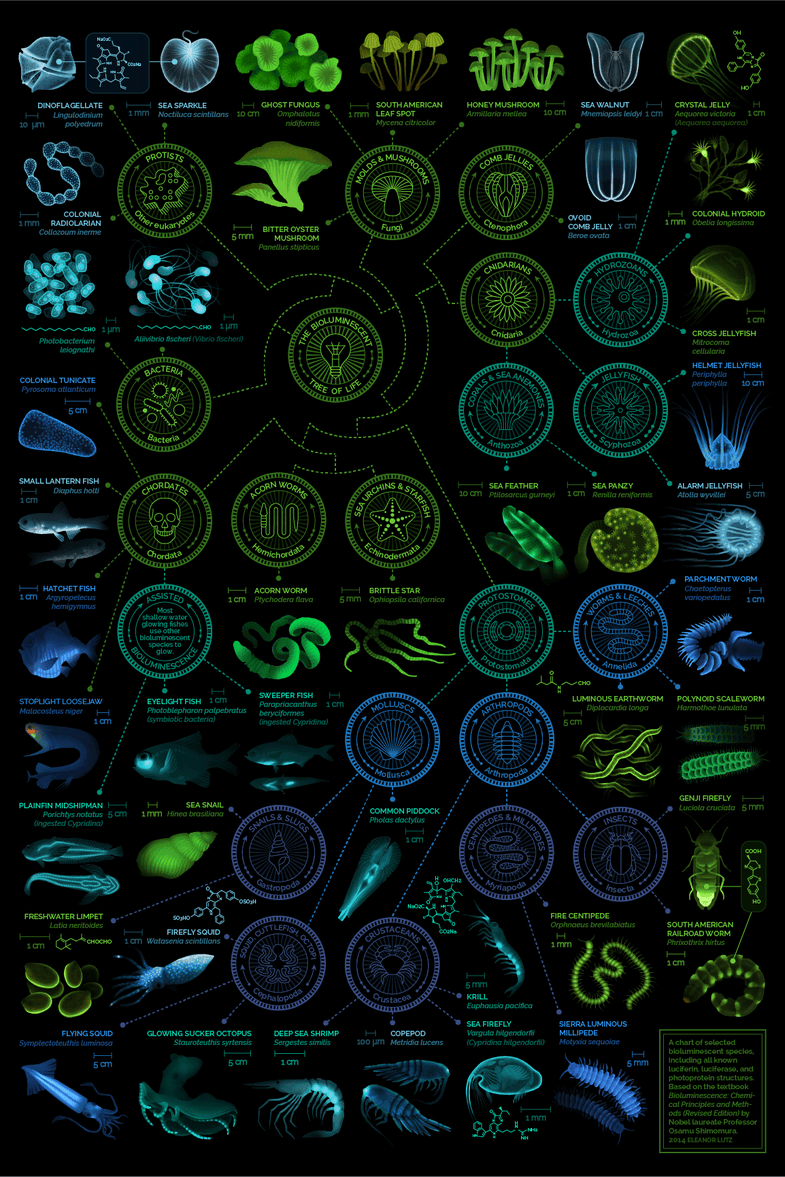Who Knows What Glows?
Check out this chart of bioluminescent creatures

On warm evenings in late summer, some of us may recall quaint memories of catching lightning bugs, rushing to put them in hole-riddled jars. What our childhood selves may not have known is that fireflies glow at night because they are bioluminescent, meaning they are able to produce and emit light on their own.
Even though fireflies may present the most famous example of bioluminescence, the biological ability to light up is shared across different kingdoms. An enormous diversity of organisms luminesce using various biological tactics. For example, glowing sucker octopi twinkle a blue-green color due to special structures called photophores, or light-up suckers. And minuscule sea snails glow a faint green, because they contain the enzyme luciferase (as does the firefly).
Seattle-based biologist-turned-artist Eleanor Lutz created a chart of select bioluminescent species, detailing the different compounds that make them glow. Even if the chart isn’t exhaustive, you can get a pretty good sense of the huge range of organisms that are bioluminescent just by taking a peek.